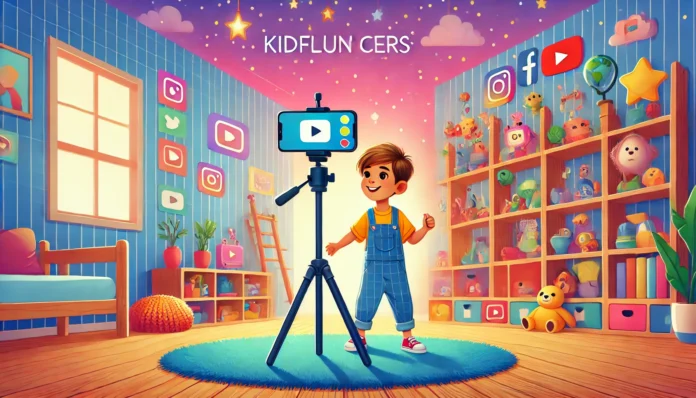The rise of kidfluencers—children under 18 who have amassed large followings on social media platforms like Instagram and YouTube—has been a global phenomenon. However, recent developments in data protection regulations are forcing a major rethink in the industry. With the introduction of the Digital Personal Data Protection (DPDP) Act, 2023, India has joined a growing list of countries tightening the reins on children’s online activities. This blog explores the implications of these rules, the challenges faced by brands and parents, and the broader impact on the influencer marketing landscape.
The DPDP Act and Its Impact on Kidfluencers
The DPDP Act, passed in August 2023, aims to strengthen data privacy protections for individuals, with a special focus on minors. The draft rules, released on January 3, 2025, mandate that children under 18 cannot use social media without verifiable parental consent. This means that data fiduciaries—entities like social media platforms and brands—must adopt technical and organizational measures to ensure that parental consent is obtained before processing any personal data of a child.
For the influencer marketing industry, this has created a wave of uncertainty. Companies that previously partnered with kidfluencers are now hesitant, awaiting clarity on how to comply with the new regulations. Anuj Chawla, director at Dreamland Publications, noted, “We do not have much clarity on the legal compliances of marketing through minor social media influencers. To avoid complications, we are planning to work more with mom influencers who create content around parenthood”.
Challenges for Brands and Marketers
- Revised Contracts and Compliance
Brands that collaborate with kidfluencers will need to overhaul their contracts to include detailed provisions for obtaining and maintaining parental consent. Aditi Verma Thakur, a senior partner at Ediplis Counsels, emphasized that these contracts must now cover parental responsibilities, such as ratifying the child’s social media activities and adhering to consent processes1. - Operational and Financial Burdens
Implementing these rules will require significant investments in compliance teams, legal expertise, and technological upgrades. Smaller agencies and startups may struggle to allocate resources, potentially diverting funds from core operations8. - Data Collection and Targeting
Marketers will face challenges in gathering authentic data about young consumers due to stricter privacy laws. This could lead to less accurate targeting and a shift toward alternative marketing strategies, such as offline activations and educational campaigns.
Parental Perspectives: Safety vs. Independence
Parents of kidfluencers are divided on the new rules. While some see them as a necessary step toward ensuring a safer online environment, others worry about the impact on their children’s independence.
P.U. Joby, father of 10-year-old motivational influencer Benjamin Joby, supports the regulations, stating, “This is a great move that would reduce incidents of trolling and ensure safer content for minors”. On the other hand, Shivani Kapila Tyagi, a mom influencer managing her three-year-old daughter’s account, believes the rules may be harsher for teenagers who independently handle their accounts.
Global Context: A Growing Trend
India’s DPDP rules align with global efforts to regulate children’s online presence. For instance, Australia recently announced a ban on social media use for children under 16, while France has implemented laws to safeguard the earnings of child influencers.
In the U.S., California has introduced laws requiring parents to set aside a portion of their child’s earnings in a trust, ensuring financial protection for young influencers. These measures highlight a growing recognition of the need to balance children’s online opportunities with their safety and well-being.
Ethical Concerns and the Future of Kidfluencing
The rise of kidfluencers has raised significant ethical questions, including:
- Exploitation and Labor: Are children being exploited for financial gain?
- Privacy Risks: How can we protect children from online predators and deepfake threats?
- Mental Health: What are the long-term impacts of early fame and public scrutiny?
Gauhar Mirza, a partner at Cyril Amarchand, highlighted the dangers of AI-driven threats like deepfake pornography, which has affected over 84% of influencers globally. These concerns underscore the importance of robust regulations to protect young influencers.
Conclusion: A New Era for Influencer Marketing
The proposed DPDP rules mark a turning point for the influencer marketing industry. While they present challenges for brands and marketers, they also offer an opportunity to build a safer and more ethical ecosystem for young influencers. As the dust settles on these regulations, it will be crucial for stakeholders to adapt and innovate, ensuring that the benefits of influencer marketing are not overshadowed by its risks.
For parents, brands, and policymakers alike, the goal should be clear: to create a digital environment where children can thrive without compromising their safety, privacy, or future.


